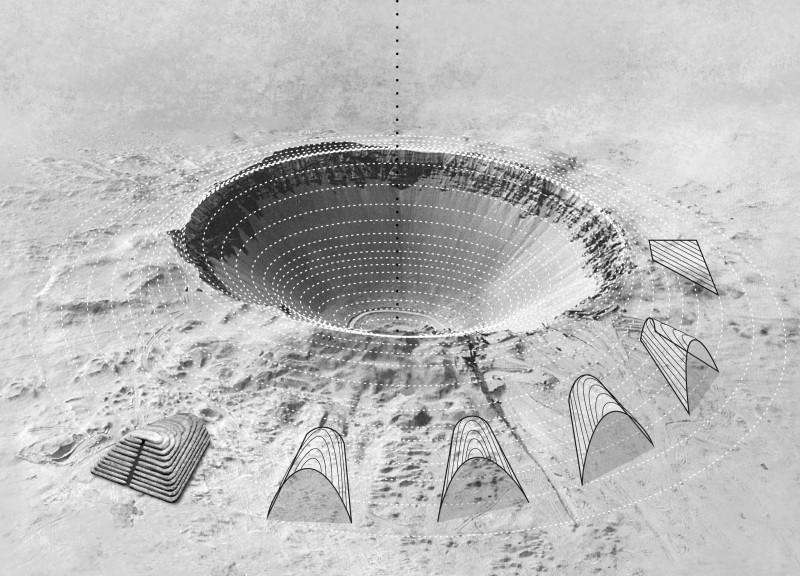5 key facts about this project
The layout is characterized by a series of interconnected spaces that flow seamlessly into one another, encouraging movement and exploration. Each space is intentionally designed to serve specific functions, including communal areas, private meeting rooms, and flexible event spaces. This thoughtful organization allows for a range of activities to take place simultaneously, from small gatherings to larger events, all within a cohesive architectural framework.
A key feature of the project is its architectural expression, which utilizes a blend of modern and contextual design elements. The facade is particularly notable, employing a combination of materials that harmoniously relate to the surrounding environment. The use of natural materials, such as locally sourced stone and sustainable timber, not only enhances the aesthetic appeal but also reinforces the project's commitment to environmental responsibility. These choices reflect a sensitivity to the local context and a desire to create an architecture that resonates with the community.
Light plays an integral role in the overall design, with strategic window placements and skylights that invite natural illumination into the interior spaces. This emphasis on transparency fosters a connection between the indoors and outdoors, creating an inviting atmosphere that encourages social interaction. The careful consideration of sightlines and vistas enhances the user experience, providing visual engagement with the surrounding landscape.
Additionally, sustainable design principles are evident throughout the project. The incorporation of green roofs, rainwater harvesting systems, and energy-efficient technologies demonstrates a proactive approach to environmental stewardship. By prioritizing sustainability, the project not only addresses immediate user needs but also contributes positively to the wider ecological context.
Unique design approaches are evident in several aspects of the project. The use of modular elements allows for flexibility in space usage, enabling the facility to adapt to changing community needs. This adaptability is complemented by the thoughtful integration of outdoor spaces, including terraces and gardens, which extend the usable area and invite users to engage with nature. The landscaping has been designed collaboratively with the architecture, enhancing the overall experience and reinforcing a sense of community.
In terms of aesthetics, the project distinguishes itself through its harmonious blend of form and function. The architectural language is characterized by clean lines and a contemporary palette, thoughtfully juxtaposed with organic materials that ground the design in its natural surroundings. This careful balance creates an inviting and approachable ambiance, making the building a desirable destination for community engagement.
The project has garnered attention not only for its innovative design and functionality but also for its emphasis on fostering community relationships. It stands as a testament to the power of architecture to bring people together and nurture social connections. Each detail, from the selection of materials to the spatial organization, has been meticulously crafted to enrich the user experience and create a lasting impact within the community.
For those interested in delving deeper into the project's architectural nuances, exploring the architectural plans, sections, and designs will provide additional insights into the thoughtful decisions that have shaped this significant space. Engaging with these elements will further illuminate the ideas that underpin this architecture, offering a comprehensive understanding of the project and its place within the urban fabric.























